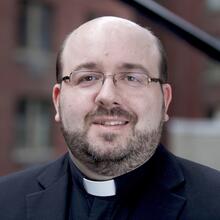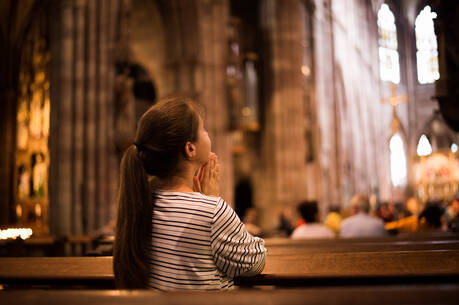I first made the Spiritual Exercises of St. Ignatius during my sophomore year at Boston College.
A Jesuit faculty member had been offering the retreat for other faculty members in a format known as the 19th Annotation, in which the retreatant prays for about an hour a day over the course of months in the course of regular daily life, instead of for 30 days straight through in silence. One of the lay faculty members who had made the retreat decided that he wanted to offer it for students, and four of us embarked on the retreat together.
In addition to praying an hour each day, we were asked to commit to meeting together once a week and going to daily Mass. This was easy enough to fit in, in a college student’s schedule at a place like B.C. I remember counting at one point, and there were at least 12 weekday Mass options between chapels on campus and the parish next to it. It would be a stretch to say I was excited or eager to go to Mass every day, but I was definitely excited about the Exercises, because I had started to think about a Jesuit vocation. And I was not opposed to daily Mass—but it seemed initially more like a hoop to jump through for the sake of the retreat than something worth doing in its own right.
There is a profound grace in submitting ourselves to a rhythm of time that we do not control.
I have been going to daily Mass, as often as I can, for the last 27 years, more than half my life now.
There is a profound grace in submitting ourselves to a rhythm of time that we do not control. For half an hour, every day, daily Mass asked me to step into Tuesday of the 13th week in Ordinary Time, or Monday of the 2nd week of Lent, or the feast of the dedication of the Lateran Basilica, rather than the week before spring break or the last month of classes or a day into the extension I asked for on that paper.
Liturgical time is unhurried, ordered and patient. It waits for us to enter in, because it is always there, turning in its own cycles from Advent to Lent to Easter to Ordinary Time. Liturgical time does the same thing over and over again—the same Eucharist every day, the same seasons every year, the same readings every three years on Sundays and every two years on weekdays. And because it does the same thing over and over again, it never gets old. Or to say it another way: Liturgical time does not get old because it is already both ancient and new, anchored to the depths of God’s revelation in history and pointing toward its fulfillment.
Among his many gifts to the church, Benedict XVI always reminded us that the liturgy we celebrate is a participation in the greater cosmic liturgy. In TheSpirit of the Liturgy, written before he became pope, he described liturgy’s transcendence of time: “‘Today’ embraces the whole time of the Church. And so in the Christian liturgy, we not only receive something from the past but become contemporaries with what lies at the foundation of that liturgy.”
Liturgical time is unhurried, ordered and patient.
That is why, I think, stepping into a church can feel like stepping from a smaller space into a larger one, even as we cross through a door, under a roof and inside walls. We become contemporaries both with what is celebrated in that place, the Eucharistic liturgy’s ongoing participation in Christ’s paschal sacrifice, and also with all those who have participated in that prayer themselves. We step from hurriedness and lack of time into an abundance of it, a time that is full of possibility. Maybe that is also a hint to one of Pope Francis’ more cryptic phrases, that “time is greater than space.”
When you read this column, whether in print or online, we will be in Lent. Most of us will be giving something up, or taking something on, aiming to make these 40 days a bit larger or more significant in our spiritual lives as we prepare for Easter. It is one of the most tangible ways that Catholics enter into liturgical time every year.
One of the reasons I have been thinking about how I learned to appreciate the rhythm of liturgical time is because we at America Media have been figuring out how to put the liturgical calendar into an app. Through the support of Lilly Endowment’s Compelling Preaching Initiative, we are proud to be launching America’s app for The Word, which presents our Scripture content in one place for subscribers. You’ll find a wealth of resources for each Sunday of the liturgical year, along with daily Scripture reflections written by our staff and contributors.
To find The Word app, search your app store for “America Magazine: The Word,” or visit americamagazine.org/wordapp for more information. Whether during Lent or anytime in the rest of the liturgical year, we hope it helps you pray and deepen your relationship with God.







